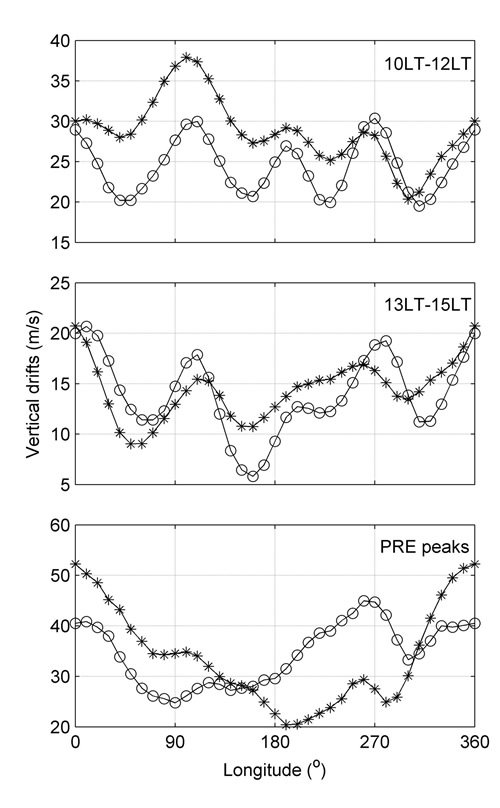Postdoctor REN Zhipeng and his teacher WAN Weixing research the equinoctial asymmetry of ionospheric vertical plasma drifts based on observations from ROCSAT‐1 during 1999 to 2004.
It is found that the observed asymmetry exhibits obvious local time dependence with three noticeable features. First, in the Eastern Hemisphere during the interval between 0900 and 1300 LT, V⊥ is obviously higher at the northern spring equinox (March–April) than at the autumn equinox (September–October). Second, there is a pronounced asymmetry for wave number 4 longitudinal structures of V⊥, which exist almost throughout the daytime and even extend into the evening sector at autumn equinox, while they appear mainly at noon and prenoon at spring equinox. Third, around sunset we find an obvious asymmetry of the prereversal enhancement (PRE); the maximum PRE velocity is higher at autumn than at spring equinox in the longitude range from 320° to 150°, and the opposite situation occurs at other longitudes.

Figure 1. Longitudinal variation of averaged V⊥at (top) 1000–1200 LT, (middle) 1300–1500 LT, and (bottom) peaks of the prereversal enhancement (PRE) for spring equinox (asterisks) and autumn equinox (circles). (Image by REN Zhipeng)
Ren et al. Equinoctial asymmetry of ionospheric vertical plasma drifts and its effect on F-region plasma density. Journal of Geophysical Research, 2011, 116(A4), A04301, doi:10.1029/2010JA016131(Download Here)